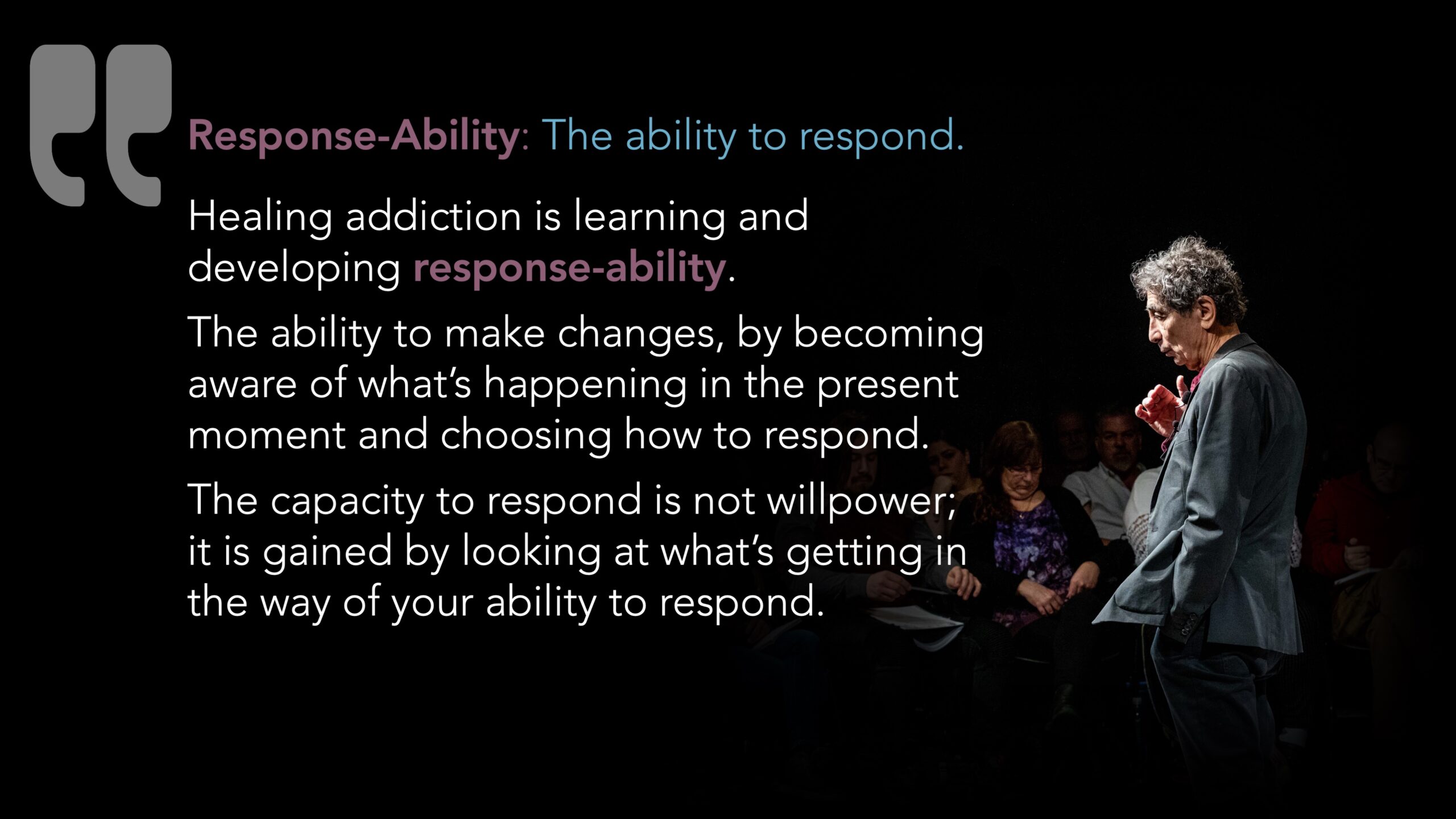What Does This Mean in Practical Terms?

Whether you are the person struggling with addiction, or the loved one of someone struggling, be willing to take action for change… and then actually start making change. Doing your own work and getting the help youneed. There are self-help groups for people struggling with codependency almost everywhere, and increasingly, online. There are some excellent books on the subject. If you have the option, going to therapy to work on these issues is probably the best and fastest way to start getting the help you need.
Another important part of this healing process is Gabor’s concept of response-ability, as he discussed in the previous lesson. We must be able to recognize and respond to what we are feeling within ourselves. Response-ability is a practice, not something we learn and check off the box and move on. Gabor’s own explanation of how he deals with feelings of abandonment are a great example: even though he knows, logically, that his feeling is irrational, it’s still there unconsciously, and it still drives his behavior. And once he is able to be mindfully aware of this, he calls on the capacity to respond to that feeling. He can let go. He is response-able.
Practicing the mindfulness that enhances response-ability will also help us to better understand how we are interacting with others, how we respond to their behaviors or words or choices. We can become more mindful of our behaviors and what we feel when we’re around others. This response-ability allows us to be able to authentically be present for one another, without judgment. This is another kind of response-able. We can respond with compassion and reason and kindness. This requires our own mindfulness, self-awareness… and practice.
And response-ability, in turn, helps us to communicate more effectively, to establish and maintain mutually clear and effective boundaries, and how to hold our own feelings, and not allow others’ behaviors to influence how we feel.
In talking about codependency, we’ve mostly been talking about the one-on-one relationship between the enabling person and the dependent person. In reality, these roles rarely happen in isolation. Codependency usually happens as part of an overall family dynamic, where each person in the family plays some role. This topic is beyond the scope of this discussion, but it is worth exploring further to see how the larger family dynamics may be affecting the individual struggling with addiction.
Challenges in this section most likely come up with those who have the strongest codependent tendencies. Encourage the family member to focus on his or her own needs, and to learn to separate those needs from the needs projected onto the client. A reminder that “thoughts are not feelings” can be helpful. Suggest books or resources to help family members take control of their feelings. This will allow the individuals to feel more in control, so that they don’t allow their emotions to be controlled by external sources.
